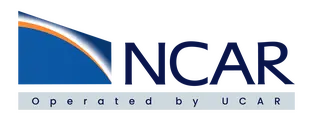Can a "state of the art" chemistry transport model simulate Amazonian tropospheric chemistry?
To Access Resource:
Questions? Email Resource Support Contact:
-
opensky@ucar.edu
UCAR/NCAR - Library
| Resource Type | publication |
|---|---|
| Temporal Range Begin | N/A |
| Temporal Range End | N/A |
| Temporal Resolution | N/A |
| Bounding Box North Lat | N/A |
| Bounding Box South Lat | N/A |
| Bounding Box West Long | N/A |
| Bounding Box East Long | N/A |
| Spatial Representation | N/A |
| Spatial Resolution | N/A |
| Related Links | N/A |
| Additional Information | N/A |
| Resource Format |
PDF |
| Standardized Resource Format |
PDF |
| Asset Size | N/A |
| Legal Constraints |
Copyright 2011 American Geophysical Union. |
| Access Constraints |
None |
| Software Implementation Language | N/A |
| Resource Support Name | N/A |
|---|---|
| Resource Support Email | opensky@ucar.edu |
| Resource Support Organization | UCAR/NCAR - Library |
| Distributor | N/A |
| Metadata Contact Name | N/A |
| Metadata Contact Email | opensky@ucar.edu |
| Metadata Contact Organization | UCAR/NCAR - Library |
| Author |
Barkley, M. Palmer, P. Ganzeveld, L. Arneth, A. |
|---|---|
| Publisher |
UCAR/NCAR - Library |
| Publication Date | 2011-08-17T00:00:00 |
| Digital Object Identifier (DOI) | Not Assigned |
| Alternate Identifier | N/A |
| Resource Version | N/A |
| Topic Category |
geoscientificInformation |
| Progress | N/A |
| Metadata Date | 2025-07-17T14:26:45.017667 |
| Metadata Record Identifier | edu.ucar.opensky::articles:11644 |
| Metadata Language | eng; USA |
| Suggested Citation | Barkley, M., Palmer, P., Ganzeveld, L., Arneth, A., Hagberg, D., Karl, Thomas, Guenther, Alex B., Paulot, F., Wennberg, P., Mao, J., Kurosu, T., Chance, K., Müller, J., De Smedt, I., Van Roozendael, M., Chen, D., Wang, Y., Yantosca, R.. (2011). Can a "state of the art" chemistry transport model simulate Amazonian tropospheric chemistry?. UCAR/NCAR - Library. https://n2t.org/ark:/85065/d7t43tp0. Accessed 02 December 2025. |
Harvest Source
- ISO-19139 ISO-19139 Metadata

